11 Sep 2025 
|
Artificial intelligence explores the underground Researchers at the Paul Scherrer Institute PSI have shown that artificial neural networks have the potential to determine very precisely the characteristics of rock layers, like their mineralogical composition, solely on the basis of drill core images. This could speed up future geological investigation efforts while simultaneously optimising costs. |
11 Sep 2025 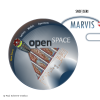
|
Not Rocket Science, just Nuclear Rocket Science The PSI Laboratory for Reactor Physics and Thermal-Hydraulics (LRT) conducts computational and experimental research with focus on the safety of nuclear reactors and systems. In recent years, it established the EPSILON program to coordinate and consolidate its research activities on nuclear space applications. Among other things, developments were initiated towards an open-source European platform for high-fidelity simulations and experiments dedicated to space nuclear reactors. Referred to as the openSPACE platform, its underlying concepts are a) to include not only solvers but also reference simulation models as well as experimental validation data; b) to make all of these available to the broader and combined nuclear- and space communities for usage and/or further developments. Through this, the goal is thus not only to facilitate collaborative research in this area but also to enable effective support to the European Space Agency for thorough design, safety and performance evaluations of nuclear reactor systems for in-space propulsion and/or surface power. A first development phase focused on nuclear electric propulsion was proposed and retained among the two projects selected in 2023 by the Swiss National Science Foundation (SNSF) for its MARVIS call (Multidisciplinary Advanced Research Ventures in Space) and funded by the Swiss Secretariat for Research and Innovation (SERI). This project, to be conducted via four inter-connected PhD theses, was launched in October 2024 and this marks thus a key milestone for the propulsion of PSI nuclear research towards space. |
| 11 Sep 2025 | Generation IV International Forum (GIF) in Switzerland | hosted by PSI/NES in April 2025 The 53rd GIF Experts Group and 59th GIF Policy Group Meetings (EG/PG) took place from April 7-10, 2025. |
11 Sep 2025 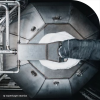
|
Cooperation in reactor research Copenhagen Atomics, a Danish molten salt reactor developer, and the Paul Scherrer Institute PSI, Switzerland’s largest research institute for natural and engineering sciences, have signed a large-scale experimental collaboration agreement. |
11 Sep 2025 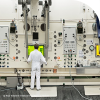
|
60 years of the Hotlab The Hotlab at the Paul Scherrer Institute PSI is a unique experimental facility for analysing highly radioactive materials – its 60th anniversary marks a milestone not only in the institute’s history but also in the history of Swiss nuclear technology as a whole. |
22 Dec 2023 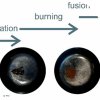
|
Forensics: Quantitative tracing of Silicon in CRUD Chalk River Unidentified Deposits (CRUD) are dissolved and suspended solids, product of the corrosion of structural elements in water circuits of nuclear reactors. The chemical composition of CRUD is variable as it depends on the composition of the reactor’s structural material, as well as the types of refueling cycles. Recent internal investigations have found unexpected but significant Si-amount in CRUD. The chemical composition of CRUD holds key information for an improved understanding of CRUD formation and possible impact in fuel reliability and contamination prevention. The standard analytical methods available in the hot laboratory did not allow an easy quantitative determination of the Si-amount in CRUD. A new innovative procedure has been developed and tested with synthetic CRUD name Syntcrud. The adapted flex-fusion digestion method presented here is able to provide reliable concentrations of several elements within CRUD, including Si, which was not possible in methods used previously for ICPMS measurement. |
24 Oct 2023 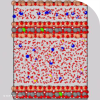
|
Mobility of Dissolved Gases in Smectite under Saturated Conditions Various gases are produced by metal corrosion and organic material degradation in deep gelological repository for nuclear waste. To ensure repository safety, it's important to demonstrate that gases can be dissipated by diffusion in host rocks and prevent pressure buildup in repository near field. Smectite mineral particles form a pore network that is usually saturated with water, making gas diffusion the primary transport mechanism. |
15 May 2023 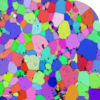
|
A unique environment for research on highly radioactive materials PSI has a unique (worldwide) environment for the investigation of highly radioactive / toxic materials:
|
15 May 2023 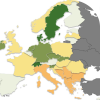
|
Evaluation of European electricity supply resilience The increasing risk of extended electricity supply disruptions and severe electricity price fluctuations strongly motivate an evaluation of electricity supply resilience. In this direction, this research proposes a multicriteria decision support framework to assess resilience at a country level, based on three major dimensions: Resist, Restabilize and Recover. In total, 35 European countries are ranked according to their performance on 17 indicators, through a synergy of MCDA methods, techniques and communication protocols. The assessment framework has been extended to incorporate the Choquet Integral method, in order to accommodate potentially interacting pairs of criteria and negate their arbitrary effects on the final evaluation results. The analysis incorporates country data from credible international databases, as well as the preference information of a European energy expert. The results are envisaged to support energy policymakers in Europe and provide guidelines and areas for improvement at a country level. |
15 May 2023 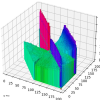
|
Approximate Computing for Nuclear Reactor Simulations During the last decades, computing power has been subject to tremendous progress due to the shrinking of transistor size as predicted by Moore’s law. However, as we approach the physical limits of this scaling, alternative techniques have to be deployed to increase computing performance. In this regard, the next big advance is envisioned to be the usage of approximate computing hardware based on field-programmable gate arrays and/or digital-analogue in-memory circuits. Such approximate computing can provide disproportional gain (x1000) in energy efficiency and/or execution time for acceptable loss of simulation accuracy. |
Pagination
- Page 1
- Next page
Copyright · All rights reserved